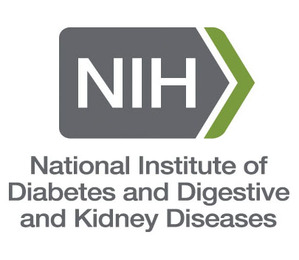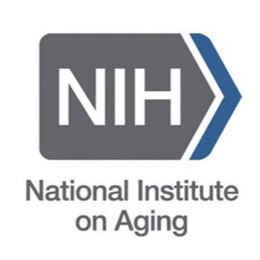Research Profile
John LaCava, Ph.D.
Research Associate Professor, The Rockefeller University
Visiting Senior Scientist, IOCB, Czech Academy of Sciences
Managing Director, B13LOGY LLC
John LaCava earned an A.S. degree from Massachusetts Bay Community College in Biotechnology (1998) and completed his B.S. degree in Biotechnology from the University of California, Davis (2000). He subsequently earned his Ph.D. in Molecular Genetics (2005) from The University of Edinburgh, Scotland, where he studied mechanisms of post-transcriptional gene regulation with Prof. David Tollervey. Thereafter, John trained in structural proteomic research methods within the Mass Spectrometry of Biomacromolecules group at the University of Amsterdam; and as an EMBO post-doctoral fellow, he studied pre-mRNA splicing regulation at the Centre for Genomic Regulation in Barcelona, Spain. In 2008, John returned to the USA to join the Laboratory of Cellular and Structural Biology at The Rockefeller University (headed by Prof. Michael Rout), and also became part of the NIH-funded National Center for Dynamic Interactome Research. Working with Profs. Michael Rout and Brian Chait, John focussed on developing methods to improve affinity-based proteomic studies using biochemistry and mass spectrometry. In 2016 John was promoted to the rank of Research Assistant Professor at The Rockefeller University and also joined Prof. Jef Boeke’s NIH-funded Center for Systems Biology of Retrotransposition, earning him a joint appointment as Visiting Assistant Professor at the Institute for Systems Genetics, NYU Langone Health. In 2019 John was promoted to Research Associate Professor at The Rockefeller University, and was recruited to join the European Research Institute for the Biology of Ageing (at the University Medical Center Groningen) as a Group Leader (Associate Professor rank), where he led the Laboratory of Macromolecules and Interactomes, through August of 2024. Presently, John has returned to The Rockefeller University and is also appointed as Visiting Senior Scientist at the Institute of Organic Chemistry and Biochemistry of the Czech Academy of Sciences.
John’s group develops biochemical and ‘omics methods to study the contributions of dysregulated macromolecular interactions to human diseases, including those related to ageing. Among these, the group studies the molecular (patho)physiology of LINE-1 ribonucleoproteins in cancer, auto-immunity, and neuro-degeneration.




Emerging Lines of Investigation (select examples)
- Contributions of O-mannosylation to E-cadherin interactomes
- LINE-1 retrotransposons in aging and neurodegeneration
- Viral mimicry in Systemic Lupus Erythematosus (SLE)
Major Sources of Funding (previous 5 years)
- Black Family Therapeutic Development Fund, Proof-of-Concept Grant – 2025
- L1 Diagnostics for Precision Oncology
- National Institute of Diabetes and Digestive and Kidney Diseases, Research Program Grant – 2024
- National Institute of Allergy and Infectious Disease, Research Program Grant – 2024
- Kenneth Rainin Foundation, Innovator Award – 2023
- Understanding the role of lysosomal autophagy in inflammatory bowel disease
- Robertson Therapeutic Development Fund, Advanced Proof-of-Concept Grant – 2023
- Pathogenic nucleic acids underlie systemic lupus erythematosus (SLE)
- National Institute of Allergy and Infectious Disease, CCHI Infrastructure and Opportunity Fund – 2023
- The National Institute on Aging, Research Program Grant – 2022
- Health Holland & Ribon Therapeutics Inc., Public Private Partnership – 2022
- Interrogating PARP14 interactomes in search of mechanisms of action
- Robertson Therapeutic Development Fund, Proof-of-Concept Grant – 2022
- LINE-1 retrotransposons as drivers of neuroinflammation and Alzheimer’s disease
- Health Holland & ROME Therapeutics Inc., Public Private Partnership – 2020
- Robertson Therapeutic Development Fund, Proof-of-Concept Grant [continuation] – 2020
- Diagnostic detection of L1 retrotransposons, a newly recognized hallmark of cancer
- Health Holland & Refeyn Ltd., Public Private Partnership – 2020
- The National Institute of General Medical Science, Research Program Grant Supplement – 2020
2025
Rapid DNA Cleavage by the LINE-1 Endonuclease Proximal to DNA Ends and at Mismatches. DOI: 10.1016/j.jbc.2025.110994
Repeats mimic pathogen-associated patterns across a vast evolutionary landscape. DOI:10.1016/j.xgen.2025.101011
Interferons and Cytokines Induce Transcriptional Activation of the Long-Interspersed Element-1 in Myeloid Cells from Autoimmune Patients. European Journal of Immunology. DOI:10.1002/eji.202451351
Targeted detection of endogenous LINE-1 proteins and ORF2p interactions. Mobile DNA. DOI: 10.1186/s13100-024-00339-4
2024
Cancer cells restrict immunogenicity of retrotransposon expression via distinct mechanisms.Immunity.DOI: 10.1016/j.immuni.2024.10.015
Interrogating data-independent acquisition LC–MS/MS for affinity proteomics. Journal of Proteins and Proteomics. DOI:10.1007/s42485-024-00166-4
Subcellular location of L1 retrotransposon-encoded ORF1p, reverse transcription products, and DNA sensors in systemic lupus erythematosus granulocytes. Mobile DNA. DOI: 10.1186/s13100-024-00324-x
Multiparameter screening optimizes immunoprecipitation. BioTechniques. DOI: 10.2144/btn-2023-0051
Structures, functions, and adaptations of the human LINE-1 ORF2 protein. Nature. DOI: 10.1038/s41586-023-06947-z
2023
CCDC88B interacts with RASAL3 and ARHGEF2 and regulates dendritic cell function in neuroinflammation and colitis. Communications Biology. DOI: 10.1038/s42003-023-05751-9
Multiple RNA-binding proteins associated with long interspersed element-1 encoded ORF1p are targeted by the autoimmune response in systemic lupus erythematosus. Journal of Cellular and Molecular Immunology. DOI: 10.46439/immunol.2.022
Consequences of a telomerase-related fitness defect and chromosome substitution technology in yeast synIX strains. Cell Genomics. DOI: 10.1016/j.xgen.2023.100419
Ultrasensitive detection of circulating LINE-1 ORF1p as a specific multi-cancer biomarker. Cancer Discovery. DOI: 10.1158/2159-8290.CD-23-0313
Expression of L1 retrotransposons in granulocytes from patients with active systemic lupus erythematosus. Mobile DNA. DOI: 10.1186/s13100-023-00293-7
2022
LINE-1 expression in cancer correlates with p53 mutation, copy number alteration, and S phase checkpoint. PNAS. DOI: 10.1073/pnas.2115999119
Targeting DNA topoisomerases or checkpoint kinases results in an overload of chaperone systems, triggering aggregation of a metastable subproteome. eLife. DOI: 10.7554/eLife.70726
2021
IgG and IgA autoantibodies against L1 ORF1p expressed in granulocytes correlate with granulocyte consumption and disease activity in pediatric systemic lupus erythematosus. Arthritis Research & Therapy. DOI: 10.1186/s13075-021-02538-3
2020
Affinity proteomic dissection of the human nuclear cap-binding complex interactome. Nucleic Acids Research. DOI: 10.1093/nar/gkaa743
NCBP3 positively impacts mRNA biogenesis. Nucleic Acids Research. DOI: 10.1093/nar/gkaa744
National Cancer Institute Think-Tank Meeting Report on Proteomic Cartography and Biomarkers at the Single-Cell Level: Interrogation of Premalignant Lesions. Journal of Proteome Research. DOI: 10.1021/acs.jproteome.0c00021
LINE-1 ORF2p expression is nearly imperceptible in human cancers. Mobile DNA. DOI: 10.1186/s13100-019-0191-2
2019
To the editor in reply to Dr. Crow’s letter. Arthritis Rheumatology. DOI: 10.1002/art.41104
High prevalence and disease correlation of autoantibodies against p40 encoded by long interspersed nuclear elements (LINE-1) in systemic lupus erythematosus. Arthritis & Rheumatology. DOI: 10.1002/art.41054
Identification of RNase-sensitive LINE-1 Ribonucleoprotein Interactions by Differential Affinity Immobilization. Bio-protocol. DOI: 10.21769/BioProtoc.3200
RNA Binding Proteins as Regulators of Retrotransposon‐Induced Exonization. Bioessays. DOI: 10.1002/bies.201800263
2018
Targeting the CALR Interactome in Myeloproliferative Neoplasms. JCI Insight. DOI 10.1172/jci.insight.122703
Polycomb Complexes Associate with Enhancers and Promote Oncogenic Transcriptional Programs in Cancer through Multiple Mechanisms. Nature Communications. DOI: 10.1038/s41467-018-05728-x
Functions of unconventional mammalian translational GTPases GTPBP1 and GTPBP2. Genes & Development. DOI: 10.1101/gad.314724.118
Dissection of affinity captured LINE-1 macromolecular complexes. eLife. DOI: 10.7554/eLife.30094
LINE-1 protein localization and functional dynamics during the cell cycle. eLife. DOI: 10.7554/eLife.30058
Characterizing ZC3H18, a multi-domain protein at the interface of RNA production and destruction decisions. Cell Reports. DOI: 10.1016/j.celrep.2017.12.037
2017
Tumor suppressor NPRL2 induces ROS production and DNA damage response. Scientific Reports. DOI: 10.1038/s41598-017-15497-0
The Polycomb group protein CBX6 is an essential regulator of embryonic stem cell identity. Nature Communications. DOI: 10.1038/s41467-017-01464-w
RNA Degradation Assay Using RNA Exosome Complexes, Affinity-purified from HEK-293 Cells. Bio-protocol. DOI: 10.21769/BioProtoc.2239
Affinity Purification of the RNA Degradation Complex, the Exosome, from HEK-293 Cells. Bio-protocol. DOI: 10.21769/BioProtoc.2238
2016
Purification and Analysis of Endogenous Human RNA Exosome Complexes. RNA. DOI: 10.1261/rna.057760.116
Protein complex affinity capture from cryomilled mammalian cells. Journal of Visualized Experiments. DOI: 10.3791/54518
2015
Rapid, Optimized Interactomic Screening. Nature Methods. DOI: 10.1038/nmeth.3395
Affinity proteomics to study endogenous protein complexes: Pointers, pitfalls, preferences and perspectives. BioTechniques. DOI: 10.2144/000114262
2014
Expression and detection of LINE-1 ORF-encoded proteins. Mobile Genetic Elements. DOI: 10.4161/mge.29319
2013
The human cap-binding complex is functionally connected to the nuclear RNA exosome. Nature Structural & Molecular Biology. DOI: 10.1038/nsmb.2703
Affinity proteomics reveals human host factors implicated in discrete stages of LINE-1 retrotransposition. Cell. DOI: 10.1016/j.cell.2013.10.021
Improved native isolation of endogenous Protein A-tagged protein complexes. BioTechniques. DOI: 10.2144/000114012
2012
Improved methodology for the affinity isolation of human protein complexes expressed at near endogenous levels. BioTechniques. DOI: 10.2144/000113864
2006
RNA-quality control by the exosome. Nature Reviews Molecular Cell Biology. DOI: 10.1038/nrm1964
2005
RNA degradation by the exosome is promoted by a nuclear polyadenylation complex. Cell. DOI: 10.1016/j.cell.2005.04.029
2023
Affinity-Based Interactome Analysis of Endogenous LINE-1 Macromolecules. In M.R. Branco & A. de Mendoza Soler (Eds.), Transposable Elements: Methods and Protocols. Springer. DOI: 10.1007/978-1-0716-2883-6_12
2020
The Eukaryotic Exosome: Methods and Protocols. Methods in Molecular Biology Series (Springer). Vol: 2062. Eds. LaCava, J & Vaňáčová, Š. DOI: 10.1007/978-1-4939-9822-7
Affinity Proteomic Analysis of the Human Exosome and Its Cofactor Complexes. In J. LaCava & Š. Vaňáčová (Eds.), The Eukaryotic RNA Exosome: Methods and Protocols. Springer. DOI: 10.1007/978-1-4939-9822-7_15
2016
Protein Complex Purification by Affinity Capture. In B. Andrews, C. Boone, T. Davis, & S. Fields (Eds.), Budding Yeast: A Laboratory Manual. Cold Spring Harbor Laboratory Press. DOI: 10.1101/pdb.top077545. Includes 3 companion protocols: DOI: 10.1101/pdb.prot087932; DOI: 10.1101/pdb.prot087940; DOI: 10.1101/pdb.prot087957
Characterization of L1-RNPs. In J.L. Garcia (Ed.), Transposons and Retrotransposons: Methods and Protocols. Springer. DOI: 10.1007/978-1-4939-3372-3_20
2022
(PENDING) Ultrasensitive Assays for Detection of ORF1p in Biofluids. U.S. Patent Application No. 63/423,696.
2015
Apparatus and Method for Parallel Collection and Analysis of the Proteome and Complex Compositions. US Patent No. 9,084,994.
O-mannose glycosylations influence E-cadherin functional interactions. DOI: 10.1101/2025.08.05.668670
Reverse transcriptase inhibitors induce autophagy in a LINE-1 ORF1p-dependent manner. DOI: 10.1101/2025.08.07.669170
Repeats Mimic Immunostimulatory Viral Features Across a Vast Evolutionary Landscape. DOI: 10.1101/2021.11.04.467016
Complex+: Aided Decision-Making for the Study of Protein Complexes. DOI: 10.1101/744656